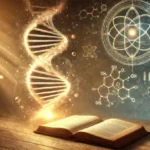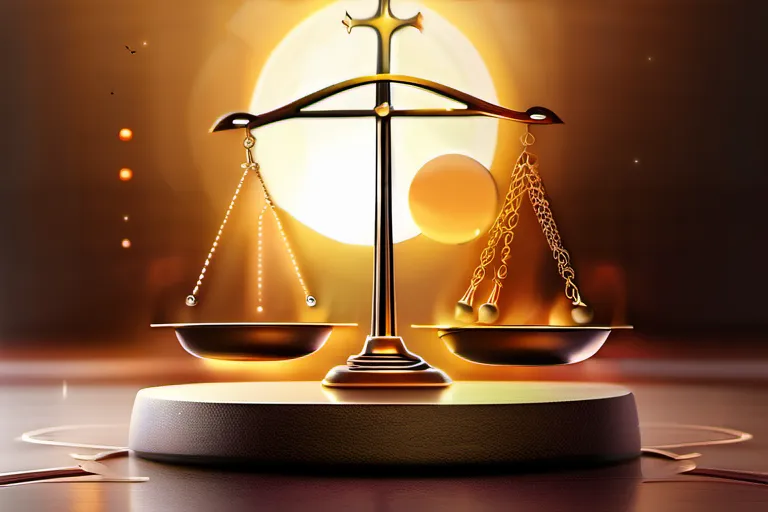Exploring the Intersection of Faith and Reason
In this comprehensive article, we delve into the fascinating intersection between religion and science. We’ll explore how these two seemingly disparate fields can provide answers to some of life’s most profound questions.
The Historical Intersection of Religion and Science
The Historical Intersection of Religion and Science: Explore the historical relationship between religion and science, from ancient Greece to the modern era.
Imagine stepping back in time to the cradle of Western civilization—ancient Greece. Here, philosophers like Plato and Aristotle pondered the nature of the cosmos, blending empirical observation with metaphysical speculation. Was their quest for knowledge driven by a desire to understand the natural world or was it intertwined with their pursuit of truth? Could these early sages, seeking to unravel the mysteries of the universe, have unknowingly laid the groundwork for both religion and science as we know them today?
Moving forward through history, we find ourselves in medieval Europe. The Church’s influence was profound; it not only preserved classical texts but also acted as a custodian of knowledge during turbulent times. But what about those intrepid scholars who dared to challenge the prevailing doctrines? Figures like Galileo Galilei, for instance—his heliocentric model contradicted the Church’s teachings, sparking a battle between faith and reason that echoed through the centuries.
The 17th century marked a turning point. The Scientific Revolution brought about a new way of thinking, emphasizing observation and experimentation over divine revelation. Yet, in this era of enlightenment, many scientists remained deeply religious. How can we reconcile the belief in a deity with the search for scientific truth? Take Isaac Newton, who saw his work as an exploration of God’s creation. His blend of theology and physics became a model for others to follow.
The 20th century witnessed another tumultuous shift. Darwin’s theory of evolution challenged religious beliefs about the origins of life, leading to fierce debates. How do we reconcile the beauty of nature with the harsh realities of natural selection? As scientists grapple with these questions today, they often find themselves caught in a tension between empirical evidence and spiritual inquiry.
From ancient Greece to the modern era, the relationship between religion and science has been complex, dynamic, and ever-evolving. Can both domains answer the same questions about existence, purpose, and the workings of the universe? The journey through history suggests that while they may approach these inquiries from different angles, there is much common ground to be found. As we continue to explore this intersection, perhaps the true challenge lies not in finding a single path but in respecting and integrating multiple perspectives.
The Role of Faith in Scientific Discovery
Can religion and science answer the same questions? The answer often hinges on how we define those questions. Throughout history, faith has played a pivotal role in driving scientific discovery, much like a lighthouse guiding ships through treacherous waters.
Consider Galileo Galilei’s revolutionary work on astronomy. He risked everything to support his heliocentric model, which challenged the prevailing geocentric view supported by religious authorities. Was Galileo merely a scientist fighting for truth or was he also a man of deep religious faith? The answer could be both. His belief in the goodness of nature and its underlying order aligned with his scientific pursuits.
The monk Nicholas Steno’s contributions to geology provide another intriguing example. Steno was deeply influenced by his Christian beliefs, which shaped his approach to understanding natural phenomena. He viewed rocks as “books of Nature,” a metaphor that reflects both his religious and scientific mindset. His work laid the foundation for stratigraphic principles still in use today.
How did these religious scientists reconcile their faith with their discoveries? Some found solace in the idea that they were merely uncovering truths that God had already revealed, as if nature itself was a testament to divine creation. Others saw science and religion as complementary, each offering different lenses through which to understand the world.
So, can religion and science answer the same questions? In many cases, they do. Both seek understanding, but from different vantage points. While science often focuses on empirical evidence and testable hypotheses, religion delves into existential questions that science alone cannot fully address.
The interplay between faith and reason has long been a source of both conflict and collaboration. It’s this dynamic that continues to shape our understanding of the universe and our place within it. As we continue to explore the cosmos, we are reminded that sometimes, the greatest discoveries come not just from asking questions, but from the dialogue between different ways of knowing.
Scientific Explanations for Religious Phenomena
Can science provide answers that religion can’t reach? In recent decades, we’ve seen numerous scientific theories attempting to explain phenomena traditionally associated with religious beliefs. One of the most profound areas is the origin of life and the universe itself.
Take the Big Bang theory as an example. It offers a compelling narrative about how the universe began, suggesting it came into existence from a singularity about 13.8 billion years ago. This concept challenges traditional religious views that often propose a divine creation event, raising questions: Is the Big Bang just another way of describing a creation story?
Similarly, scientific theories on evolution challenge religious perspectives on the origin and development of life forms. Darwin’s theory suggests species evolve over time through natural selection, whereas many religions attribute such changes to direct intervention by a creator. Here too, we wonder: Can both perspectives coexist, or are they fundamentally at odds?
These scientific explanations often rely on empirical evidence and mathematical models, painting a picture of the universe that is vast, complex, yet strangely ordered. This order has led some to argue that it points towards an underlying cosmic intelligence or design—questions that resonate with theological concepts.
Is the universe’s intricate design merely coincidental, or does it hint at something deeper? The laws governing physics and biology are like a symphony composed by an unseen maestro. Are we meant to see this as evidence of a divine orchestrator?
The dialogue between religion and science is not just about competing narratives but also about exploring complementary ways of understanding the world. Perhaps, in some sense, both can answer the same questions, each from a different angle.
Religious Perspectives on Scientific Concepts
How can religions, which often seem rooted in ancient texts and traditional teachings, reconcile with the ever-evolving realm of science? The answer lies in understanding how various religious perspectives interpret and incorporate scientific concepts into their beliefs. For instance, consider the concept of creation. In many Christian traditions, the Book of Genesis describes a creation event that aligns surprisingly well with the Big Bang theory proposed by scientists. Could it be that the biblical narrative is using metaphorical language to describe an event that science can now detail? Is it possible that these stories are not meant to be taken as literal accounts but rather as allegories for profound truths?
In Hinduism, the concept of ‘cosmic cycles’ aligns with scientific theories about the universe’s expansion and contraction. This idea suggests that the universe undergoes endless cycles of creation, sustenance, and dissolution, much like how a day follows night in an eternal cycle. Could this metaphorical understanding be a way for Hindus to reconcile their beliefs with modern cosmology? Is it not a grand idea that our religious texts might hold deeper truths than we initially perceived?
Buddhism also offers insights through its teachings on impermanence and change, which resonate with scientific observations of the universe’s constant flux. The Buddhist concept of ‘dependent origination’ can be seen as a philosophical stance that acknowledges the interconnectedness of all phenomena, much like how quantum physics describes the universe. Could this metaphysical view provide a bridge between Eastern spiritual thought and Western scientific reasoning? Are we not on the cusp of seeing these ancient teachings as more relevant than ever before?
The question then arises: Can religions and sciences truly answer the same questions, or are they inherently separate domains with different methods of inquiry? Perhaps both can coexist harmoniously, each enriching our understanding of the world in unique ways. Is it not a beautiful thought that through dialogue and mutual respect, we might uncover even more profound truths?
The integration of scientific concepts into religious beliefs is not just an academic exercise but a deeply personal journey for many. It allows individuals to find meaning and purpose within the framework of both faith and reason. As we continue to explore these intersections, we may discover that the boundaries between religion and science are not as rigid as they once seemed.
The Limits of Both Religion and Science
Can religion and science truly answer the same questions, or do they remain in their own isolated domains? The limits of both are vast and complex, yet there’s a compelling idea that they can complement each other when it comes to addressing certain existential inquiries.
Imagine religion as a lighthouse guiding us through the foggy nights of our existence. It illuminates ethical principles, moral values, and spiritual truths that science often cannot measure or explain. But what if this lighthouse is built on shaky ground? How can we trust its light when it seems to contradict the clear, empirical findings of scientific inquiry?
On the other hand, consider science as a powerful microscope, dissecting the minutiae of reality with unprecedented precision. It uncovers the mechanics behind phenomena, explains the workings of the universe, and predicts outcomes based on verifiable evidence. Yet, does it provide any insight into why we exist or what gives life meaning?
Both domains have their limitations. Religion can be dogmatic, rigid, and prone to misinterpretation, while science often leaves us with a cold, impersonal view of the world that lacks human warmth and soul. But isn’t there something beautiful in acknowledging these gaps? Could it be that together, they offer a more complete picture?
Perhaps the real question is not whether religion or science can answer the same questions, but rather how we integrate their insights to navigate life’s most profound mysteries. Can we see them as two sides of the same coin, each incomplete without the other? And if so, what does this mean for our understanding of ourselves and our place in the universe?
The Future of the Intersection of Religion and Science
Can religion and science continue to dance together as partners in understanding our universe? The future of this intersection seems bright, but what might it look like?
Imagine a world where scientists and religious scholars collaborate more closely than ever before. Could we see the development of new scientific theories that are deeply rooted in spiritual beliefs? For instance, could advancements in quantum physics shed light on the mysteries of the soul, prompting a reassessment of how spirituality interacts with material existence?
As technology advances, will it become possible to use scientific tools to explore the spiritual realm more directly? Think about it: if we can probe the depths of DNA, why not delve into the essence of consciousness and the mind-body connection? This could open doors to new forms of therapy that combine traditional medicine with practices like meditation or prayer.
On a societal level, how will this integration impact our views on ethics and morality? Could a deeper understanding of science help us bridge gaps in religious teachings, fostering greater harmony among different belief systems? Conversely, might religion provide the moral compass needed to guide ethical decisions in a world increasingly shaped by technological advancements?
The key challenge lies in finding common ground where science’s empirical methods can complement rather than clash with religious doctrines. This requires open-mindedness and mutual respect from both sides. How will society react to this evolving relationship? Will it embrace the new possibilities or resist change, fearing that blending religion and science might dilute their purity?
The future at the intersection of religion and science is not just about answering questions but also about redefining how we approach knowledge itself. It’s a thrilling prospect, one that could transform our understanding of existence in profound ways. Can both realms truly coexist in harmony? The answer might just lie in their shared quest for truth and meaning.
Conclusion
 By understanding the unique perspectives that both religion and science offer, we can gain a more holistic view of the world and our place in it. This article serves as a starting point for further exploration into this complex and captivating topic.
By understanding the unique perspectives that both religion and science offer, we can gain a more holistic view of the world and our place in it. This article serves as a starting point for further exploration into this complex and captivating topic.










